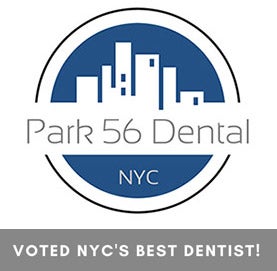-
What Should You Do After a Root Canal?
What Should You Do After a Root Canal?
A root canal procedure is often essential to relieve pain and save a tooth that has been severely infected or decayed. While the procedure itself can be daunting for many, understanding the root canal recovery process is crucial for ensuring a quick and smooth healing period. This article delves into the best practices and tips for post-root canal care, ensuring that your recovery is as effective and comfortable as possible.
Continue reading “What Should You Do After a Root Canal?”
-
Root Canal Myths Debunked: Is It Considered Oral Surgery?
Clearing Up Concerns About Root Canals
Few dental treatments induce as much anxiety and confusion as root canals. Amidst swirling myths and common misconceptions, one recurring question stands out: Is a root canal oral surgery? Despite common confusion, the simple answer is yes. In this article, we will explore why root canals fall under the category of oral surgery, debunk popular myths surrounding the procedure, and clarify what patients can expect. Continue reading “Root Canal Myths Debunked: Is It Considered Oral Surgery?”
-
Can Root Canals Last a Lifetime?
Root Canals, a Tooth-Saving Procedure
A root canal is a standard dental procedure intended to rescue teeth that have become badly infected or significantly decayed. However, patients often wonder: how long does a root canal last? Understanding the factors that influence the permanence of a root canal and the steps that can be taken to maximize its lifespan is crucial for maintaining oral health and making educated decisions about dental care. Continue reading “Can Root Canals Last a Lifetime?”
-
What’s the Average Age for a Root Canal?
Analyzing the Data
Root canal therapy is a prevalent dental procedure often viewed with apprehension and misconceptions. Many people associate it with pain, but in reality, this treatment is a crucial intervention for saving teeth that are at risk of being lost due to severe infection or decay. Despite its daunting reputation, the procedure itself is a routine part of modern dentistry, designed to relieve pain and preserve the natural tooth. In this article, we will explore the average age at which individuals typically experience their first root canal. By examining who typically needs a root canal and why, we aim to provide insights that alleviate fear and promote better dental health awareness. Continue reading “What’s the Average Age for a Root Canal?”
-
How Root Canals Can Improve Your Smile and Dental Health

Have you ever heard a character in a movie or TV show say “I’d rather have a root canal?” That’s a reference to a dental procedure that used to be quite painful and complicated but, due to medical advancements, no longer has to be. The weird thing is, most people don’t even understand what the procedure is, or how much it can improve your smile and your dental health. If you’ve ever wondered about this topic, we’re here with the details.
Before the root canal procedure was invented, a tooth with a diseased nerve had to be taken out. Today it can often be saved with a fairly simple procedure involving one to three office visits, and with minimal downtime. And in contrast to old methods, it can be done virtually painlessly.
After a tooth has emerged through the gums, the only real function of the root is to detect heat or cold. When a tooth develops a crack or a deep cavity, germs can enter the pulp tissue and cause an infection inside the tooth. If this is left untreated, an abscess may form, and if the infected tissue is not removed, pain and swelling can result. This can also injure your jawbones and cause other health issues.
Teeth with infected roots aren’t always painful, but signs you may need a root canal include severe toothaches, pain when chewing or applying pressure, prolonged sensitivity or pain in response to hot or cold temperatures, a dark discoloration of the tooth, and swelling or tenderness of the adjacent gums. If you experience any of these symptoms, contact your dentist.
During a root canal procedure, your dentist or endodontist (a dentist who specializes in dental nerves) removes the affected tissue. Then the interior of the tooth is cleaned and sealed. Finally, the tooth is filled in with a dental composite. If your tooth has extensive decay, your dentist may want to place an artificial crown on your tooth to protect it from breakage. If you take good care of your teeth with regular brushing, flossing, and dental checkups, your restored tooth can last a lifetime.
If you think your teeth may have damage that requires a root canal procedure, choose the practice that was voted best dentist in NYC! At Park 56 Dental Group, we offer pediatric, prosthodontics, endodontics, oral surgery, Invisalign®, emergency, and sedation dentistry, all at the highest level of treatment. We serve the Midtown, Central Park, Upper East Side, Park Avenue, and all surrounding Manhattan and New York areas, with a patient-centered practice that has hours to fit your schedule. Schedule your complimentary consultation today by contacting us online or calling us at (646) 679-3989.
-
How to Care for Yourself After a Dental Procedure

Root canals, tooth extractions, and dental implants are common smile restorations that require some recovery time. Choosing an experienced oral surgeon is the first step toward ensuring a comfortable recovery.
At Park 56 Dental, we offer sedation dentistry to make your time in the dentist’s chair as comfortable as possible. We also review the recommended aftercare with you before you undergo any procedure, so you know exactly what to expect during your recovery. And if you have any urgent questions for us, rest assured that we answer emergency calls 24 hours a day.
Here are some general aftercare tips we recommend to take care of yourself after a dental procedure.
- Take it easy: Take time off school or work and rest at home. Avoid physical exertion for two to three days, and keep your head propped up with pillows to reduce inflammation.
- Apply ice packs: Ice helps to numb any localized pain and brings the swelling down. Throughout the first recovery day, apply a towel-wrapped ice pack for 15 minutes on, 15 minutes off.
- Leave gauze pads in place: Wait for three or four hours to remove any gauze pads your oral surgeon put in your mouth. This helps minimize bleeding and helps the surgical area clot properly.
- Eat soft food: Stick to a liquid or soft-food diet for a few days. Chilled soup, mashed potatoes, scrambled eggs, yogurt, smoothies, milkshakes, and ice cream are all good options.
- Avoid hot foods and drinks: Wait until the local anesthesia wears off completely to eat or drink anything hot so you don’t accidentally burn your tongue or the roof of your mouth.
- Don’t drink through a straw: Suction in the mouth can dislodge the blood clot from the treated area, leading to a painful condition called dry socket. To prevent this, don’t drink from a straw for three days after oral surgery.
- Take medication: Over-the-counter pain relievers can help make your recovery more comfortable. If your oral surgeon prescribes antibiotics, take those as directed as well.
- Rinse with salt water: 24 hours after your procedure, rinse gently with warm saltwater. A good ratio is one-half teaspoon salt per one-half cup of water. Rinse after every meal and snack to help remove food particles from around the surgical area.
- Brush carefully: Avoid brushing the treated area until it has fully healed, but continue to brush the rest of your teeth.
- Don’t smoke or drink alcohol: These habits can interfere with the healing process, so avoid them for at least 24 hours. Better yet, quit smoking and always limit your alcohol intake to improve your overall health.
If you’re looking for skilled dental care and oral surgery in NYC, you’ve come to the right place. Park 56 Dental has been voted NYC’s best dentist, so why would you go anywhere else for your next dental procedure? To learn more about our services, please call us at (212) 826-2322 or contact us online today.
-
Smile Restoration Services

At Park 56 Dental, nothing is more important than our patients’ oral health. If you have missing, discolored, decayed, or crooked teeth, we can help! Learn about our smile restoration services to find a solution that works for you.
Dental Implants
Missing teeth are among the most noticeable oral health problems. When decay or a traumatic injury results in tooth loss, dental implants are often the best restorative option available. An implant features a screw-like titanium body, which takes the place of the missing root. Then, a tooth-colored crown is cemented on top of the implant. The result is a functional, natural-looking replacement tooth that can last decades with proper care.
Dental Bridges
As another option for treating tooth loss, dental bridges “bridge the gap” between two teeth without implanting anything into the gums. Bridges can be placed more quickly and cost less than implants, but they require healthy surrounding teeth to prevent the gums and jawbone from degrading. We can help you decide if implants or bridges are best for your tooth loss scenario.
Dental Veneers
Do you have chipped, misshapen, or stained teeth? With veneers, you no longer have to hide your smile! Veneers are thin, tooth-colored shells that adhere to the front of your natural teeth. They can be whatever shape, size, and color you want to achieve the desired aesthetic effect. Thanks to their durable porcelain construction, you can expect veneers to last many years with proper care.
Root Canals
If one of your teeth has a deep cavity or diseased nerve, it may be possible to save the tooth with a root canal treatment. While root canals have a reputation for being painful, the intent is to remove pain and swelling. Our dentists can complete this procedure in one to three office visits. By the end of your treatment, you’ll be ready to show off a healthy, pain-free smile!
Invisalign
Have you always wanted straighter teeth but balked at traditional metal braces? Invisalign is the answer! This treatment uses a series of clear, plastic aligners to straighten your smile over an average of nine to 15 months. Invisalign is comfortable, removable, and BPA-free for your safety. Best of all, the aligners are virtually invisible, so no one will even know you’re wearing them!
Zoom! Whitening
Many at-home products claim to whiten your teeth, but only in-office Zoom! whitening can give you the results you want in a single, one-hour visit. Remove years of staining and brighten your smile by an average of eight shades with this safe, simple, and relaxing process. Our dentist will ensure your teeth are healthy and eligible for whitening before treatment begins.
Are you ready to fall in love with your smile like never before? The dentists at Park 56 Dental have the skills and experience needed to perform restoration services for our New York City patients. If you are dissatisfied with your smile for any reason, please contact us at (212) 826-2322 and schedule a consultation today!
-
What is a Dead Tooth?

You may not think of your teeth as being alive, but they are. The outer shell, called the enamel, is the hardest substance in the human body. However, the nerves and blood vessels at the heart of your teeth are soft and vulnerable. If this inner layer (known as the pulp) becomes damaged, blood may stop flowing. A tooth with no blood flow is called a “dead” tooth. Without treatment, this tooth may become infected or abscessed and will eventually fall out.
What Causes a Dead Tooth?
Trauma or injury is a common reason for a tooth to die. Falling or being hit in the mouth can cut off the blood supply to a tooth or even cause blood vessels to burst. With no blood flow, the nerve inside the pulp dies.
Tooth decay is another possible cause. Without consistent dental hygiene habits, cavities can start to form. Left untreated, decay slowly eats through the tooth toward the sensitive pulp, eventually causing an infection. Inflammation may cut off blood flow to the pulp, causing the tooth to die.
How to Spot a Dead Tooth
It isn’t always easy to identify a dead tooth. Only a dental professional can pinpoint signs of restricted blood flow and a dying tooth in its early stages, which is why regular dentist visits are so important. Before long, though, the problem will soon become apparent.
Pain is the first symptom to watch out for. This may seem odd because the nerve inside your tooth is dead, but that’s not where the pain comes from. Bacteria and dead nerve remnants touching the extremely sensitive nerve endings around your tooth, called the periodontal membrane, are the source of your pain.
A change in color comes next. Dead teeth often darken over time as red blood cells die. This is very similar to developing a bruise. If a single tooth in your mouth gradually becomes yellow, gray, or black, visit the dentist right away.
Signs of infection could also appear if the dead tooth doesn’t receive treatment. You may notice swelling, a bad taste in your mouth, or an inflamed sore on your gums.
Treatment for a Dead Tooth
A root canal is the first option. Dentists want to avoid removing teeth whenever possible, and this procedure could save a dead or dying tooth. It involves removing all signs of decay and infection from deep within the tooth. Then, the dentist fills and seals it. In many cases, a crown is needed following a root canal.
Tooth extraction is the next choice. Even if your dentist can’t save your tooth, prompt treatment is necessary to avoid other complications. Once removed, you have several options for replacing the missing tooth, including an implant, bridge, or partial denture.
Park 56 Dental offers tooth care and smile restorations out of our spa-like, patient-centered New York dentist office. If you notice signs of a dead tooth, please contact us online or call us at (212) 826-2322 to schedule an appointment.
-
What is a Root Canal and What are the Signs that you Need One

You’ve probably heard of a root canal, because they’re referenced when people are talking about something difficult or painful, and they pop up in dental jokes. Do you know what the term means? While you may be under the impression that a root canal is a form of torture, it is actually a special procedure that’s relatively simple and can often save a tooth.
The term “root canal” actually means two things. It may refer to the part of the tooth between the pulp and the roots. More commonly, it’s a reference to the dental procedure used to relieve root canal pain by removing infected material. Nerves and blood vessels are contained in the root canals of teeth, and by removing a nerve in an infected tooth, a dentist can eliminate pain caused by infection or decay in the pulp. While many people assume that the root canal procedure is painful, it’s rarely more painful than a filling. The time leading up to the root canal, however, can cause a great deal of pain, stemming from several different causes.
- Tooth decay penetrating the teeth can cause root canal pain.
- Cracks or chips that damage the teeth can also be painful.
- Disease in your mouth may cause decay or infection, compelling your dentist to recommend a root canal.
If you are experiencing extreme tooth pain when you eat, or sensitivity to hot and cold that lingers after you’ve removed whatever was hot or cold, you may need a root canal. Other signs that a root canal may be required include a small, pimple-like bump on the gums, darkening of the tooth, or tenderness or swelling in the gums near the painful tooth. If these symptoms are familiar, it may be time to talk to your dentist about a root canal.
Root canals are highly effective, and many teeth fixed using root canal therapy can last a lifetime. The procedure has a success rate higher than 95 percent and involves several steps.
- First, the dentist takes an x-ray to determine exactly how much damage exists.
- A local anesthetic will numb the area to prevent pain, and a rubber dam will be placed around the tooth to keep it dry.
- The dentist will drill an access hole into the tooth and remove the damaged tissue and nerve.
- After the infected material is removed, the tooth may be sealed or given a temporary filling.
- To complete the tooth restoration, a crown or filling is placed.
At Park 56 Dental Group, we offer pediatric, prosthodontics, endodontics, oral surgery, Invisalign®, emergency, and sedation dentistry, all at the highest level of treatment. We serve the Midtown, Central Park, Upper East Side, Park Avenue, and all surrounding Manhattan and New York areas, with a patient-centered practice that has hours to fit your schedule. Schedule your complimentary consultation today by contacting us online or calling us at (212) 826-2322.
-
Exploring Common Reasons for Root Canals

If your dentist tells you that you need a root canal, chances are that you’ll have many questions about what to expect, starting with why you need one in the first place. There are a number of different reasons to perform a root canal, but in each case, root canals allow natural teeth to be saved rather than extracted. Keeping your natural teeth is healthier than relying on dental implants and other restorations. Here is a closer look at some of the common reasons dentists perform root canals for their patients.
Tooth Decay
In the case of a small area of tooth decay, your dentist may remove the decay and perform a filling. However, when the area of decay becomes large and infects deep parts of the tooth, a root canal is usually necessary. During a root canal, the bacteria causing the decay are cleaned from the inside of the tooth, and the tooth is sealed and capped. This prevents the need for removing the infected tooth and stops the infection from spreading throughout the mouth.
Repeated Procedures
If a tooth is treated for a cavity on multiple occasions, it is often necessary to perform a root canal. Repeated procedures will eventually lead to a significant amount of the tooth being removed, but a root canal and crown can stop the repeated infections and rebuild the structure of the tooth.
Cracks or Chips
When a tooth is injured, the pulp may become damaged or inflamed. In addition to causing pain, the damage to the surface of the tooth leaves it more vulnerable to infections. A root canal can remove inflamed pulp and protect the tooth surface to prevent further damage.
Your dentist at Park 56 Dental will be happy to answer all of your questions about root canal treatment and why it is the right choice for you. For all of your dental care needs, from root canals to dental cleanings in NYC, call us for an appointment at (646) 783–3529.
RECENT POSTS
categories
- Uncategorized
- Cosmetic Dentistry
- Veneers
- Healthier Teeth
- Teeth Whitening
- Dental Health
- Video
- Dental Emergencies
- Invisalign
- Dental Implants
- Root Canal
- Sedation Dentistry
- Infographic
- Dental Crowns and Bridges
- Dental Anxiety
- Gum Disease
- COVID-19
- Bad Breath
- New York Dentist
- Cut out sugar
- General Dentistry
- Oral Health
- Oral Cancer
- Dry Mouth
- Gum Health
- Toothache
- Dental Sealants
- Cavities
